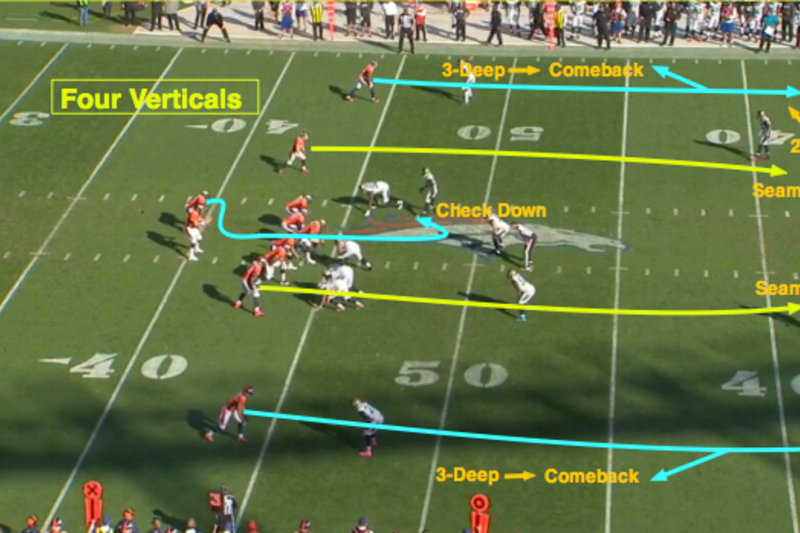In fantasy football, the number of IR (Injured Reserve) spots varies by league. Typically, leagues offer one to three IR spots.
These spots are crucial as they allow you to hold onto injured players without using up a valuable roster spot. Fantasy football is a dynamic game, and managing your roster efficiently is key to success. Injuries are a part of the game, and IR spots provide a strategic advantage.
They let you keep injured players while adding healthy ones to your lineup. Understanding how many IR spots your league offers can help you make smart decisions during the season. This knowledge is essential for keeping your team competitive and making the best use of your roster space. Let’s delve into the details and maximize your fantasy football strategy.

Credit: www.youtube.com
Introduction To Fantasy Football Ir Spots
Fantasy football is an exciting and strategic game. It brings fans closer to the sport. One important aspect of fantasy football is IR spots. Understanding IR spots can give you an edge in your league.
What Are Ir Spots?
IR spots stand for Injured Reserve spots. These spots allow you to manage injured players on your team. Placing a player in an IR spot frees up a bench space. This means you can add another player to your roster without dropping anyone.
Players eligible for IR spots are usually injured or out for a significant time. Fantasy platforms have different rules for what qualifies a player for IR. Always check your league’s specific rules for clarity.
Importance Of Ir Spots
IR spots are crucial for managing your team efficiently. They provide flexibility during the season. Injuries are common in football. Having IR spots helps maintain a competitive roster.
Without IR spots, you might have to drop valuable players. This can weaken your team. IR spots help you avoid tough decisions. They allow you to keep important players on your roster.
Using IR spots wisely can give you an advantage. It helps you stay competitive even when players get injured. This can be the difference between winning and losing in fantasy football.

Credit: sleeper.com
Standard Ir Spot Rules
Understanding the standard IR spot rules in fantasy football is crucial. These rules determine how many injured players you can stash. They help manage your team during a season full of uncertainties. Let’s dive into the details.
Typical League Settings
In many leagues, the standard IR spots are limited. Most leagues offer one or two IR spots per team. This allows you to place injured players without dropping them. The goal is to keep your rosters competitive.
Players eligible for IR must be officially designated as injured. This means they are out for multiple weeks. Once a player is healthy, they must be removed from the IR spot. Otherwise, you cannot make other roster moves.
Variations In Ir Spot Rules
Some leagues adopt different IR spot rules. These can vary widely. For example, certain leagues provide more than two IR spots. This is common in larger leagues with deeper rosters.
Other leagues may have more restrictive rules. They might limit IR spots to specific injuries. Or only allow IR spots for players on the real-life IR list. Flexibility in these rules can significantly impact your strategy.
Understanding your league’s specific IR rules is essential. It helps you plan for player injuries. And ensures you stay competitive throughout the season.
Strategies For Using Ir Spots
Using IR spots in fantasy football can significantly enhance your team’s performance. Effective strategies allow you to maximize your player potential and balance your roster. Let’s dive into these strategies in detail.
Maximizing Player Potential
IR spots help you manage injured players without dropping them. Place injured key players on IR to free up regular roster spots. This ensures you can pick up healthy players for immediate play. Monitor player recovery closely. Activate them as soon as they are fit to play. This approach keeps your team competitive even when injuries hit.
Balancing Your Roster
IR spots are invaluable for maintaining a balanced roster. Use them wisely to keep both star players and potential breakout players. Keep an eye on waiver wire for hidden gems. Adding these players can give you an edge. Balance your roster by ensuring all positions are well-covered. Avoid overloading on a single position. This strategy can help you navigate bye weeks and unexpected injuries smoothly.

Credit: www.profootballnetwork.com
Impact On Draft Strategy
Understanding the number of IR (Injured Reserve) spots in fantasy football can significantly impact your draft strategy. Teams with multiple IR spots can afford to take more risks, while limited IR spots may push managers to play it safe. This dynamic plays a crucial role in how you approach player selection and roster management.
Drafting With Ir In Mind
Drafting with IR in mind can offer a strategic edge. Consider the following:
- Risk-Taking: More IR spots allow you to draft players with high ceilings but injury risks. You can stash them if they get injured.
- Depth: Ensure you have enough depth to cover potential injuries. Balance is key.
- Handcuffs: Drafting backups (handcuffs) for key positions becomes more viable with IR spots. This ensures you have replacements ready.
Late-round Stashes
Late-round stashes are critical in leagues with IR spots. Players who may start the season injured or are returning from injury can be valuable assets later. Here’s how to approach it:
- Identify Potential: Look for players with high upside who are currently injured. These players can be stashed on IR, freeing up bench spots.
- Monitor Updates: Stay updated on injury reports. Timely moves can make a difference.
- Waiver Wire: Keep an eye on the waiver wire for injured players who might have been dropped by other managers.
Being strategic with IR spots can be the difference between a good season and a great one. Utilize these tips to maximize your draft and in-season success.
Managing Ir Spots During The Season
Managing IR spots during the season can be challenging. These spots are crucial for a successful fantasy football team. Proper management helps you maximize your roster’s potential. Let’s explore how to handle these IR spots effectively.
Injury Monitoring
Keep an eye on player injuries. Check updates regularly. Knowing a player’s health status is vital. Use reliable sources for injury news. This helps you make informed decisions. Don’t rely on a single source. Cross-check information to ensure accuracy.
Waiver Wire Considerations
The waiver wire is your friend. Look for potential replacements. Add players with high upside. Drop those who are out for the season. Prioritize players with short-term injuries. They can return and contribute later. Keep your roster flexible.
Common Mistakes With Ir Spots
Fantasy football can be a fun and exciting game. But, many players make common mistakes with IR spots. These mistakes can cost you valuable points. It is important to know what these mistakes are. This way, you can avoid them and improve your team’s performance.
Overusing Ir Spots
Overusing IR spots is a common mistake. Some managers put too many players on IR. They think it’s a good strategy. But, it limits your flexibility. You might miss out on picking active players. Balance is key. Only use IR spots for players with real injuries.
Check injury reports regularly. Make sure the player is truly unable to play. Do not fill IR spots just because they are available. It can backfire and hurt your team in the long run.
Ignoring Long-term Injuries
Ignoring long-term injuries is another mistake. Some managers hold on to injured players for too long. They hope for a quick recovery. This can be risky. Long-term injuries can keep players out for many games.
Do not ignore the injury timeline. If a player is out for many weeks, consider dropping them. Pick an active player instead. This way, you keep your team strong and competitive.
Stay updated on injury news. Make smart decisions based on the latest information. Your team will benefit from it.
Case Studies
Case studies offer insight into how different fantasy football managers use their IR (Injured Reserve) spots. By examining these real-life examples, we can learn effective strategies and common mistakes. Let’s explore some successful IR spot management practices and learn from failed strategies.
Successful Ir Spot Management
One fantasy football manager, John, used his IR spots wisely. He monitored player injuries closely. When a key player got injured, he moved them to an IR spot. This freed up a roster spot for an active player. John stayed updated with injury reports. He picked up promising free agents. His team remained competitive throughout the season.
Another manager, Sarah, planned for injuries. She drafted players with low injury risks. Sarah kept her IR spots open early in the season. When injuries occurred, she had space to manage them. Her team performed well, even when star players got hurt.
Lessons From Failed Strategies
Not all managers use IR spots effectively. Mike, for instance, used his IR spots poorly. He filled them with players who had long-term injuries. This limited his flexibility. His team struggled when more players got hurt. Mike’s team missed the playoffs due to poor IR management.
Linda’s strategy also failed. She used her IR spots too quickly. When key players got injured later, she had no space left. Her team could not recover. Linda learned the importance of patience and planning with IR spots.
Frequently Asked Questions
What Is An Ir Spot In Fantasy Football?
An IR spot in fantasy football is a roster spot. It is designated for injured players. This allows teams to add a replacement player without dropping someone.
How Many Ir Spots Should A League Have?
The number of IR spots varies by league. Typically, leagues have 1 to 3 IR spots. This helps manage injuries effectively.
Can Ir Spots Include Covid-19 Players?
Yes, many fantasy football leagues allow COVID-19 affected players in IR spots. This helps manage unexpected absences due to the pandemic.
Do Ir Spots Count Against The Roster Limit?
No, IR spots do not count against the roster limit. They provide flexibility to manage injured players without losing a roster spot.
Conclusion
Choosing the right number of IR spots is crucial. It impacts your team’s flexibility. A balanced approach can help manage injuries better. Avoid too many spots to maintain competitiveness. Monitor your league’s rules closely. This ensures you make the best decision.
Adapt as needed to stay ahead. Winning in fantasy football requires both strategy and adaptability. Use IR spots wisely to gain an edge. This enhances your overall game experience. Good luck with your season!





